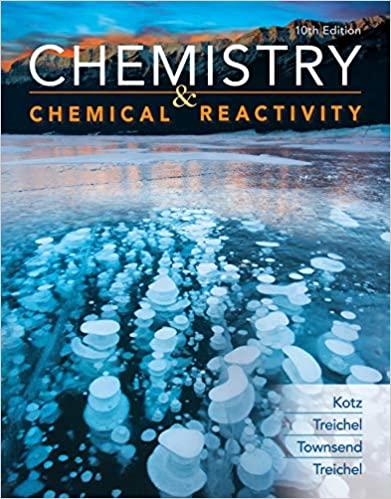The radioactive element technetium is not found naturally on Earth; it must be synthesized in the laboratory.
Question:
The radioactive element technetium is not found naturally on Earth; it must be synthesized in the laboratory. It is a valuable element, however, because it has medical uses. For example, the element in the form of sodium pertechnetate (NaTcO4) is used in imaging studies of the brain, thyroid, and salivary glands and in renal blood flow studies, among other things.
(a) In what group and period of the periodic table is the element found?
(b) The valence electrons of technetium are found in the 5s and 4d subshells. What is a set of quantum numbers (n, ℓ, and mℓ) for one of the electrons of the 5s subshell?
(c) Technetium emits a γ-ray with an energy of 0.141 MeV. (1 MeV = 106 electron-volts, where 1 eV = 1.6022 × 10−19 J.) What are the wavelength and frequency of a γ-ray photon with an energy of 0.141 MeV?
(d) To make NaTcO4, the metal is dissolved in nitric acid.

and the product, HTcO4, is treated with NaOH to make NaTcO4.
(i) Write a balanced equation for the reaction of HTcO4 with NaOH.
(ii) If you begin with 4.5 mg of Tc metal, what mass of NaTcO4 can be made? What mass of NaOH, in grams, is required to convert all of the HTcO4 into NaTcO4?
(e) If you synthesize 1.5 micromoles of NaTcO4, what mass of compound do you have? If the compound is dissolved in 10.0 mL of solution, what is the concentration?
Step by Step Answer:

Chemistry And Chemical Reactivity
ISBN: 9780357001172
10th Edition
Authors: John C. Kotz, Paul M. Treichel, John Townsend, David Treichel





